MOCO is a new Museum of Contemporary Art in Amsterdam, next to van Gogh Museum on Museumplein. Their inaugural exhibitions are Banksy/Warhol, separately presented, in the most part, but with some overlap.
Pawn has seen several exhibit of Banksy, which is always a little odd, since he’s known primarily as a street artist, a Graffito. Here, however, we see quite a few of his works on canvas, board, metal and wood.
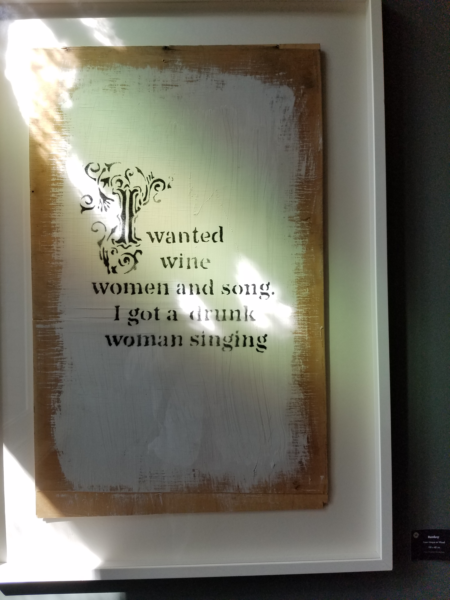
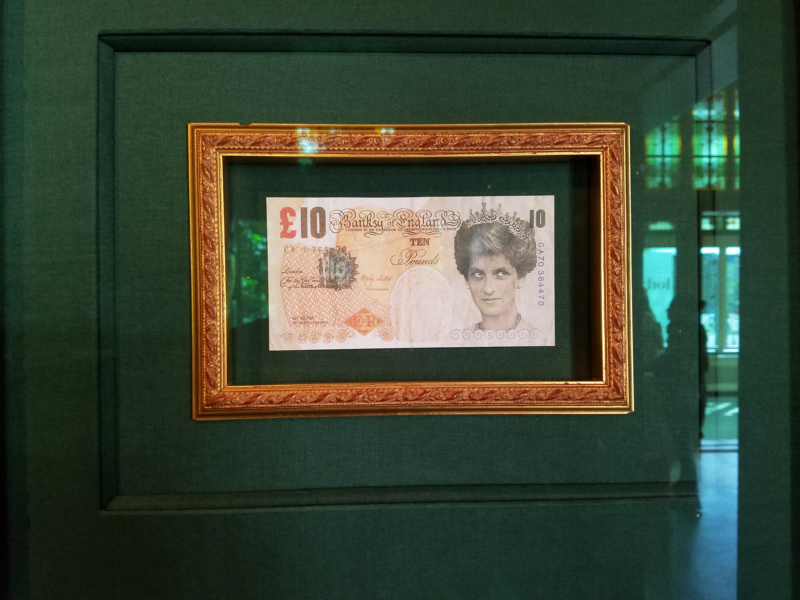
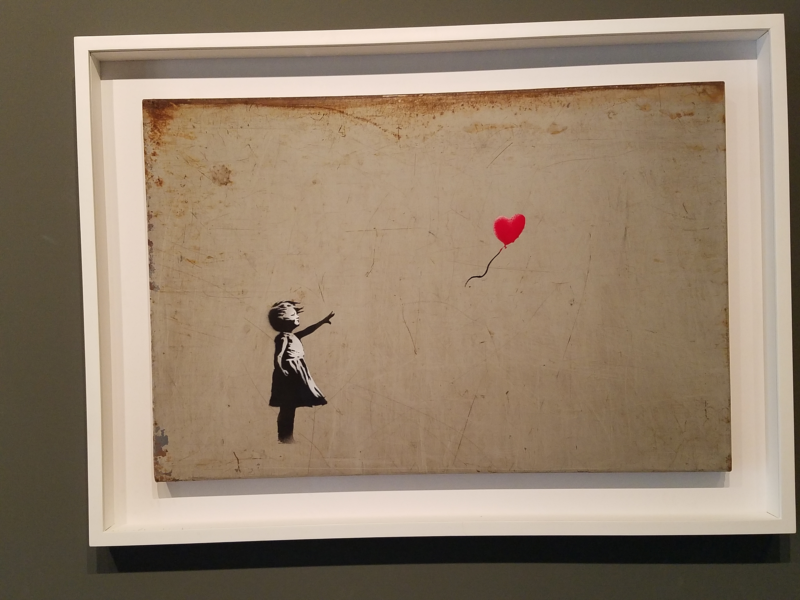
There are still samples of his street work, such as these, excised from their original locations:
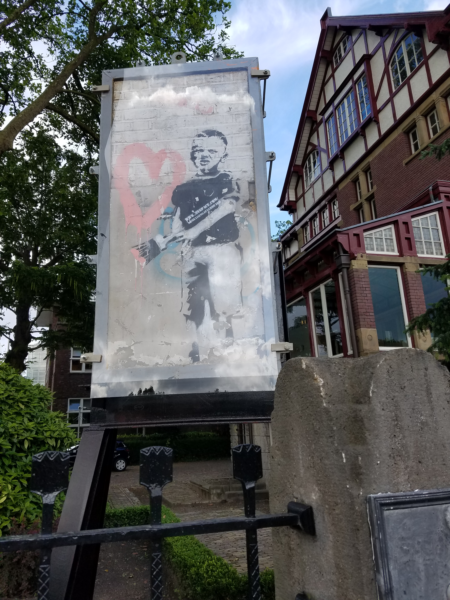
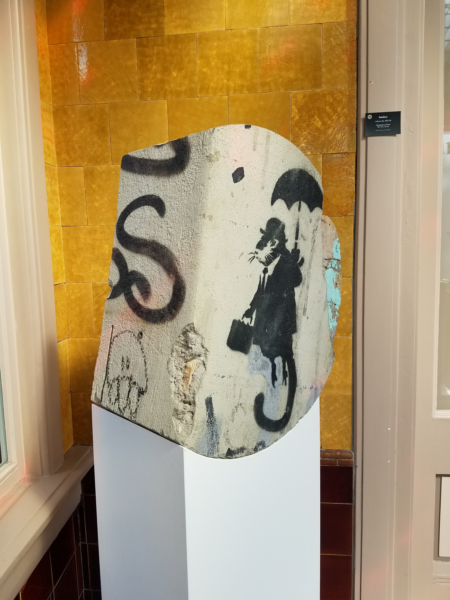
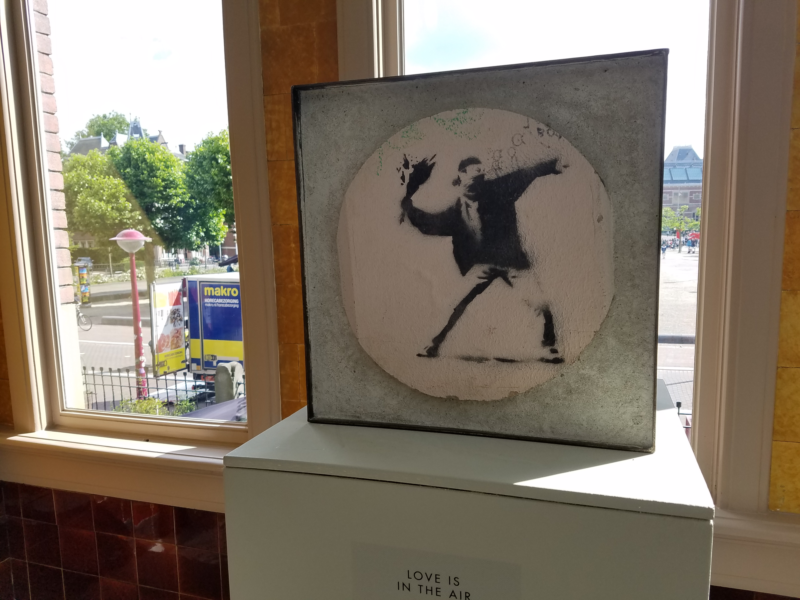
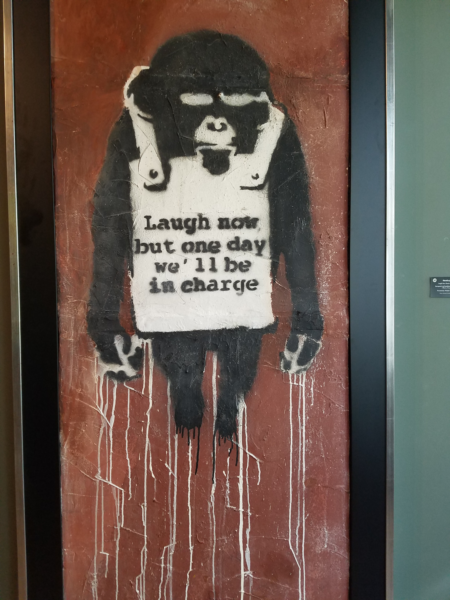
As for Warhol, while there are many familiar items on display, the real joy was in seeing some of his drawings and paintings without the Pop-Art angle.
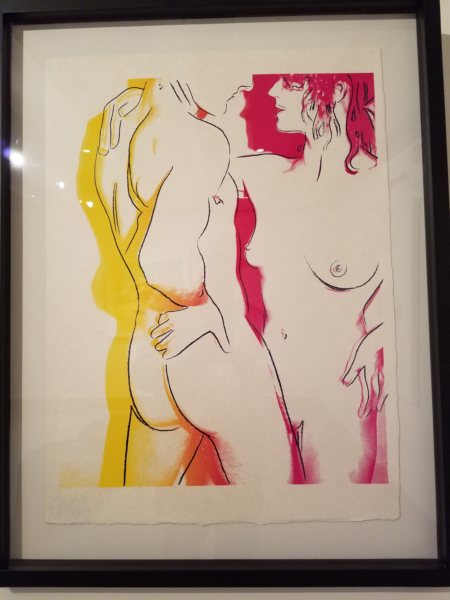
There is of course much similarity to be drawn between these two artists, and that is where the strength of this paired exhibition lies. Here are some side-by-side encounters:

Kate Moss, Gray – Banksy, 2005 Marilyn – Warhol
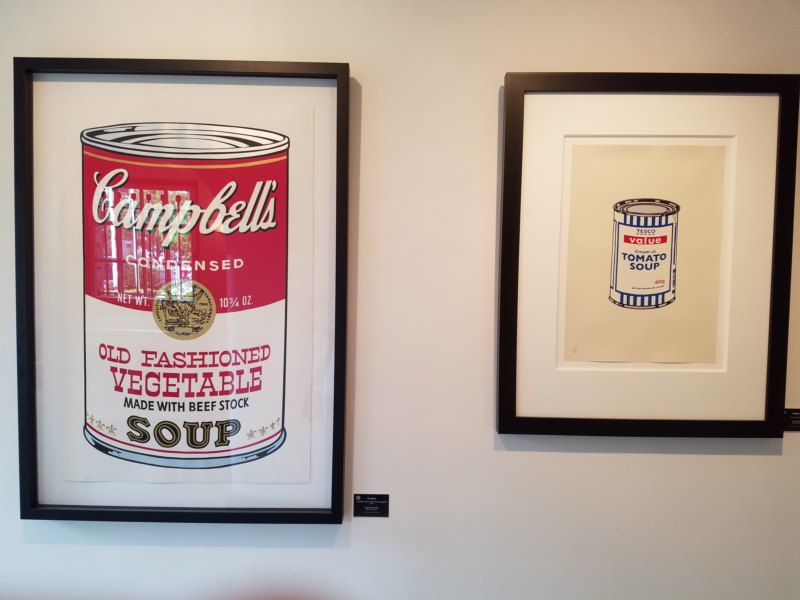
The problem with this show, however, lies in the simplistic and sometimes baffling text panels. One wonders if the curatorial staff has any clue. Pawn was particularly irked by the panel accompanying Forgive Us Our Trespassing, a Banksy work. Here is the piece, originally conceived in collaboration with Los Angeles schools students:
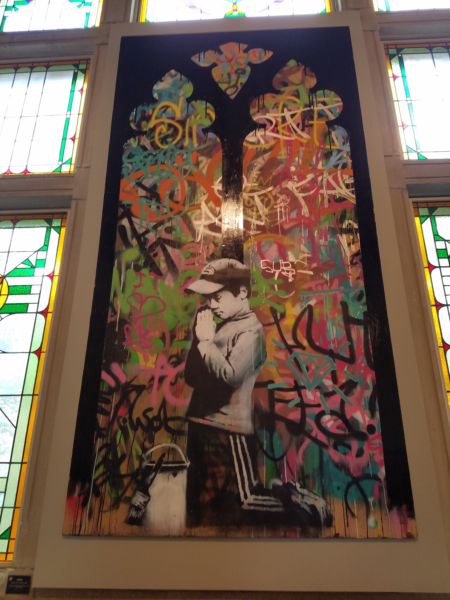
The original version, in LA, was created by the kids placing graffiti on a wall, and then Banksy painting the window frame and praying boy on top of that. Here, however, is the text the curators chose to place with it:
Like Cardinal Sin, a work with a biblical theme. “Forgive us our trespasses” is the 7th sentence in the English Catholic Lord’s Prayer, or Our Father, the most used prayer in Christian tradition.
Trespassing is also an act and word strongly associated wit Graffiti and street art, as street artists have to trespass private property in order to get a certain tag or artwork on a particular wall.
In this work, Banksy used a very literal approach by depicting a church window, which is tagged on with colors and by different artists. In front of the work, a boy is praying for forgiveness.
The implication here is that the boy seeks forgiveness for having tagged the window. To my eyes, however, the boy is seeking forgiveness for having painted the arches on top of the tags. He has seen beauty in the colours of the graffiti, and has converted the mess of tags into stained glass. I think they’ve got it all wrong!
